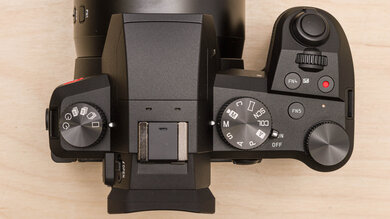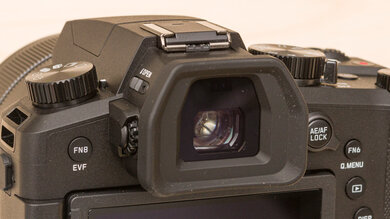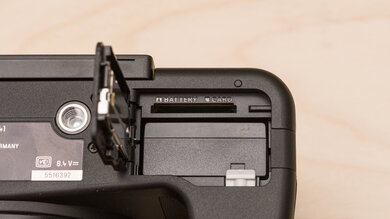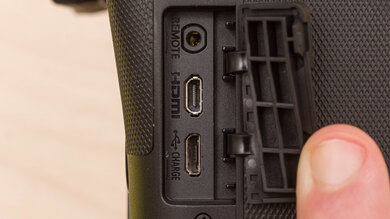The Leica V-Lux 5 is a bridge camera with a zoom lens. It's very similar to the Panasonic LUMIX FZ1000 II, with the same built-in Leica DC Vario-Elmarit lens but a slightly different body design and more premium Leica branding. Like other bridge cameras, it trades the larger sensor size of an interchangeable lens camera for the convenience of a built-in lens with longer maximum zoom, allowing you to shoot close-ups or zoom in on faraway subjects. It delivers solid image quality, with okay dynamic range and minimal visual noise, though it isn't as well-suited to dim lighting conditions. It's also decent for video, with good video stabilization and autofocus performance in FHD. However, it performs noticeably worse in 4k.
Our Verdict
The Leica V-Lux 5 is decent for travel photography. It takes high-quality images with little noise at higher ISO levels, which is helpful when taking photos in dimmer conditions. Its wide focal length range also gives you a lot of flexibility for framing. However, it's not the most portable or lightweight camera to take on the go. Also, while its autofocus system is okay at tracking moving objects, it struggles with face tracking. On the upside, it has a decent advertised battery life in photos, and the screen gets bright enough to overcome glare in sunny conditions.
- Good image quality for its class.
- Decent battery life.
- Poor face tracking.
- On the bulky side.
The Leica V-Lux 5 is decent for landscape photography. Its image quality is decent, but its dynamic range and noise handling are limited by its smaller sensor. On the upside, it feels well-built and comfortable to use. Its screen also gets bright enough to overcome glare, which is great when shooting on sunny days. However, it isn't the most portable to take to remote shooting locations.
- Good image quality for its class.
- Decent dynamic range for its sensor size.
- Feels well-built.
- On the bulky side.
- Mediocre low light performance.
The Leica V-Lux 5 is decent for sport and wildlife photography, especially for more casual photography. It has a fairly long zoom range to help you capture far-off subjects. Unfortunately, its face-tracking performance is disappointing. The image quality is great, though it doesn't have the best noise handling in low light. Still, its shooting speed is impressive, with a fast continuous shooting rate and virtually instant buffer empty time when shooting in JPEG.
- Great shooting speed.
- Good image quality for its class.
- Relatively long focal length.
- Poor face tracking.
The Leica V-Lux 5 has fair RAW photo performance. Its dynamic range is alright, though it can't capture as wide a range of detail as a camera with larger sensors. It isn't the best option for low-light shooting, either, with mediocre noise handling. That said, you can still get good results in bright lighting conditions, and its overall image quality isn't bad for its class.
- Decent dynamic range for its sensor size.
- Mediocre low light performance.
The Leica V-Lux 5 is okay for vlogging. It's not the smallest or lightest camera, but it has a fully articulated screen to help you monitor the video while self-recording. Its battery life is also superb for video, although this can vary with settings and usage. It also has a good video stabilization feature in FHD to smooth out camera shake while walking, but unfortunately, it doesn't offer digital video stabilization in 4k. The video quality is okay overall. Also, its autofocus system is decent at tracking faces in FHD but does a poor job in 4k.
- Decent overall video quality.
- Fully articulated screen.
- Good FHD video stabilization.
- Lackluster autofocus system.
- On the bulky side.
- No 4k video stabilization.
The Leica V-Lux 5 is decent for studio video. It delivers decent overall video quality, and the menu system is fantastic and easy to use. It has many helpful inputs for studio video, including a microphone jack, a remote control port, and an HDMI port that supports clean HDMI output for connecting an external recorder without any overlays, but it lacks a headphone jack. Unfortunately, the autofocus system is just okay in FHD and performs poorly in 4k.
- Decent overall video quality.
- Supports clean HDMI output.
- Lackluster autofocus system.
- No headphone jack.
The Leica V-Lux 5 isn't for action video. It's bulky, isn't designed for use with an action cam mounting accessory, and isn't water-resistant. It also can't shoot video in 120 or 240 fps to generate smooth slow-motion footage.
- Decent overall video quality.
- Lackluster autofocus system.
- Not designed for action mounts.
- Not water-resistant.
- Can't record 120 or 240 fps.
Changelog
- Updated Jan 29, 2024: Added text to the 'Raw Photo Performance' verdict box and updated existing verdict boxes for clarity and accuracy.
- Updated Jan 29, 2024: Converted to Test Bench 0.12.1.
- Updated Apr 24, 2023: Converted to Test Bench 0.12.
- Updated Apr 12, 2023: Converted to Test Bench 0.11.
Check Price
Differences Between Sizes And Variants
The Leica V-Lux 5 only comes in one color variant: 'Black'. You can see our unit's label here.
If you come across another variant, or your Leica V-Lux 5 doesn't correspond to our review, let us know, and we'll update the review.
Test Results

- The body is made of sturdy plastic
- Inputs and outputs are covered by robust rubber flaps
- Buttons are flatter and wider than those on the Panasonic LUMIX FZ1000 II
- Lens ring turns smoothly but offers nice resistance
- Command dials are smooth and easy to use, and unlike the Panasonic FZ1000 II, the top back dial feels nicer to use
- Zoom toggle is sensitive to make use easy, but not so much so that you can't control it
- The screen and hinge mechanism feel very sturdy
- The flash mechanism feels somewhat flimsy
- Has a directional pad to navigate the menu as opposed to a dial, which may make it more difficult to navigate depending on personal preference
- Shoulder strap hooks are made of plastic, as opposed to metal hooks on the Panasonic LUMIX FZ1000 II
- The grip is large, with rubberized thumb rest and front grip, and holding the camera feels secure
- Three command dials, including lens ring, make it easy to adjust exposure parameters
- Most buttons are easy to reach
- Rubberized eye cup around the viewfinder feels comfortable, with a lot of space between the viewfinder and the body
- Screen is fully articulated
- In AF mode, the lens ring is used to adjust zoom, and it does so in increments, making it easy to reach your desired focal length
- Can't change SD card while mounted on a tripod due to placement of slot
- Menu system is easy to navigate using the directional pad or touchscreen
- Quick menu gives you access to commonly used settings like ISO, drive mode, and exposure compensation
- Can be a little difficult to see the highlighted option in the Q menu, as it's only underlined by a thin red line
- You can customize up to eight buttons to suit your preferences, along with five customizable tabs on the screen
- Display option allows you to check shooting mode, aperture, shooting speed, ISO, exposure bias, white balance, flash setting, drive mode, autofocus mode, focus mode, file format, Wi-Fi, and more all at once, though you can't see through the viewfinder or screen while looking at this display
- Guide mode can explain certain features and functions to novice users and is easily toggled by pressing the 'Display' button when in the menu
Note: When shooting in RAW format, the buffer empty time is 24s.
Note: This camera doesn't have any adjustable bit rate settings.
Note: We tested autofocus performance using settings that deviate from our usual methodology to account for this camera's focal length. As such, the results may not be fully comparable with other cameras we've tested.
Note: We tested autofocus performance using settings that deviate from our usual methodology to account for this camera's focal length. As such, the results may not be fully comparable with other cameras we've tested.
Note: This camera also has an input to connect a remote. Note also that the microphone jack is located on the other side of the camera (not pictured above).































































